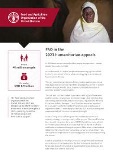Publications
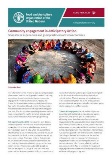
Community engagement in Anticipatory Action: Snapshot of experiences and good practices from focus countries
06/2024
The Food and Agriculture Organization of the United Nations (FAO), as one of the leading operational organizations implementing Anticipatory Action and providing technical advice and normative guidance on corresponding approaches in the agriculture and food security sector, has embarked on a project funded by the Bureau for Humanitarian Assistance of the United States Agency for International Development

Promoting the economic empowerment of rural women for improved food security and nutrition in the Niger
03/2024
The project was implemented using integrated approaches and community-based platforms – particularly Farmer Field Schools (FFS), Dimitra Clubs and local radio stations – which facilitate the empowerment and capacity building of rural women in vulnerable situations, as well as their access to and control of productive resources.
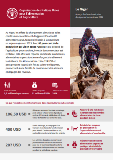
Niger: Humanitarian Needs Overview and Response Plan 2024
02/2024
In 2023, access to food emerged as the most pressing need for people in the Niger, where the impact of climate change and armed conflict continue to drive acute food insecurity.

The Niger: DIEM – Data in Emergencies Monitoring brief, round 8
01/2024
This Data in Emergencies Monitoring (DIEM-Monitoring) brief shares the results of an eighth-round assessment conducted in October and November 2023 in the Niger.

Global: Project Highlights - OSRO/GLO/203/GER
12/2023
FAO's project entitled "Scaling up Early Warning Early Action (EWEA) for agriculture and food security", funded by Germany aimed to strengthen the resilience of vulnerable people in high risk countries, prevent food crises, and reduce humanitarian needs.
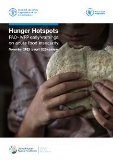
Hunger Hotspots: FAO–WFP early warnings on acute food insecurity
10/2023
FAO–WFP early warnings on acute food insecurity: November 2023 to April 2024 outlook

The Niger: DIEM – Data in Emergencies Monitoring brief, round 7
09/2023
This Data in Emergencies Monitoring (DIEM-Monitoring) brief shares the results of a seventh-round assessment conducted in July 2023 in the Niger.
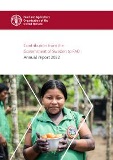
Contribution from the Government of Sweden to FAO: Annual report 2022
09/2023
In 2022, the Government of Sweden, through the Swedish International Development Cooperation Agency, contributed nearly SEK 141 million (USD 14.5 million) to the Food and Agriculture Organization of the United Nations (FAO).

Niger: DIEM – Data in Emergencies Monitoring brief, round 6
04/2023
This Data in Emergencies Monitoring (DIEM-Monitoring) brief shares the results of a sixth-round assessment conducted between February and March 2023 in Niger.

Niger: Humanitarian Response Plan 2023
03/2023
In the Niger, persistent conflict, droughts, floods and increased staple food prices have aggravated vulnerable households’ food insecurity.
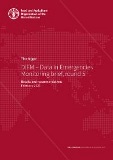
Niger: DIEM – Data in Emergencies Monitoring brief, round 5
02/2023
This Data in Emergencies Monitoring (DIEM-Monitoring) brief shares the results of a fifth-round assessment conducted between November and December 2022 in Niger.

Enhancing nutrition in emergency and resilience agriculture responses to prevent child wasting: FAO's child wasting prevention action plan (2023–2024)
11/2022
As part of the United Nations Global Action Plan on Child Wasting, FAO requires USD 500 million to implement its action plan to prevent child wasting (2023–2024) in the 15 most-affected countries.
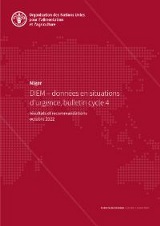
Niger: DIEM – données en situations d’urgence, bulletin cycle 4
10/2022
Ce bulletin sur le suivi des données dans les situations d'urgence (DIEM-suivi) présente les résultats de la quatrième évaluation réalisée en juillet et août 2022 au Niger.
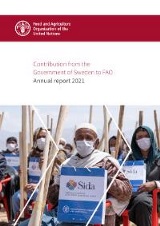
Contribution from the Government of Sweden to FAO: Annual report 2021
10/2022
In 2021, the Government of Sweden, through the Swedish International Development Cooperation Agency (Sida), contributed SEK 94 million (USD 11.08 million) to the Food and Agriculture Organization of the United Nations (FAO) emergency and resilience programme.

The Niger and Burkina Faso: Sida’s contribution to the Special Fund for Emergency and Rehabilitation Activities (SFERA) – Anticipatory Action window
09/2022
The Sahel region is experiencing a food crisis, with 38.3 million people projected to be in acute food insecurity during this year’s lean season (June–August 2022) – a fourfold increase compared with 2019 – and millions more at risk of slipping into a crisis situation or worse. The effects of climate change in the region are worsening irregular rainfall and climatic shocks such as floods. Both Burkina Faso and the Niger are especially vulnerable to flood risk.
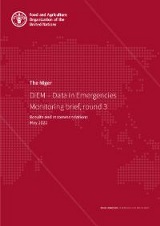
The Niger: DIEM – Data in Emergencies Monitoring brief, round 3
06/2022
This Data in Emergencies Monitoring (DIEM-Monitoring) brief shares the results of a third-round field assessment conducted between February and March 2022 in the Niger.
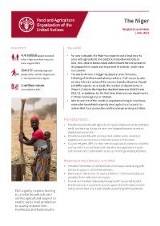
The Niger: Response overview (June 2022)
06/2022
For over a decade, the Niger has experienced a food security crisis with agricultural and pastoral production deficits.
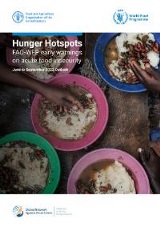
Hunger Hotspots: FAO-WFP early warnings on acute food insecurity: June to September 2022 Outlook
06/2022
The Food and Agriculture Organization of the United Nations (FAO) and the World Food Programme (WFP) warn that acute food insecurity is likely to deteriorate further in 20 countries or situations (including two regional clusters) – called hunger hotspots – during the outlook period from June to September 2022.

